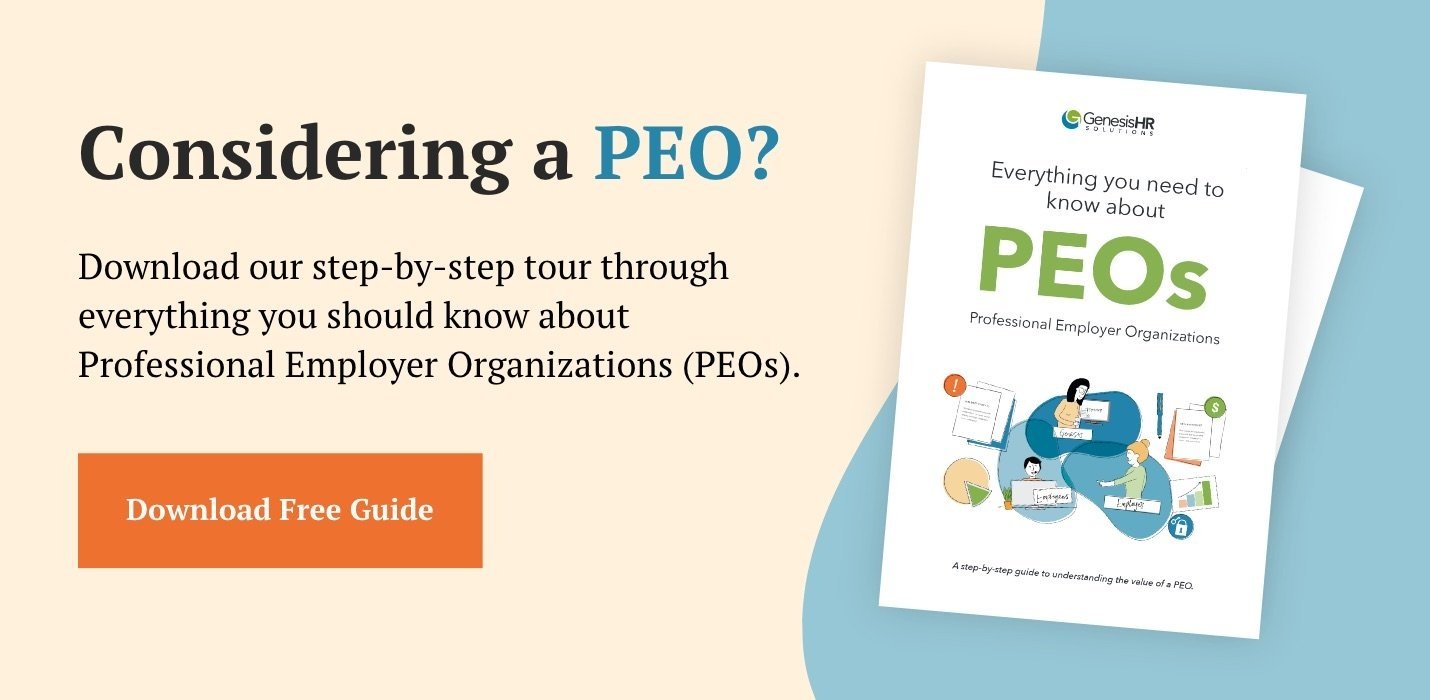Employee benefits may be expensive, but their value goes beyond a simple dollar amount. When sizing up job offers, prospective employees will absolutely be comparing your company’s benefits against those of your competitors. Of course you want to offer the best of the best—benefits that help you edge out the others—but practically, how does the cost of employee benefits affect what you can offer?
In this article, we’ll look at:
- The benefits most businesses offer.
- How much of an employee’s salary is made up of benefits.
Common Employee Benefits
- Insurance types: Medical, dental, vision, disability, and life insurance plans.
- Tax-preferred plans: Health flexible spending accounts, health savings accounts, health reimbursement accounts, transportation accounts, and more.
- 401(k) and retirement plans.
Sometimes benefits are paid for wholly by employers; other times they are paid for by employees, and sometimes the expenses are shared. How the benefits expenses are shared (or not) is determined by the employer.
The most expensive benefit to offer is health insurance. For an individual, this could cost $7,000 to $10,000 per year for total health insurance, which employers and employees often split depending on the employer’s contribution strategy. However, for a family, the cost of health insurance could be upwards of $20,000 to $25,000 per year. For employees, it’s difficult to imagine an employer not contributing to health insurance, and having the expense entirely taken out of their salaries. That’s why most employers contribute (many significantly) to health insurance—covering anywhere from 50% to 100% of the total cost.
Considering a PEO? Learn everything you ever need to know about Professional Employer Organizations (PEOs) in this free guide.
How do you decide which benefits your organization should offer?
In order to answer this question, you need to know the competitive landscape—what are the other companies in your industry offering? That will also help you to know the expectations of employees and prospective hires. There’s a delicate balance between offering the bare minimum for coverage vs. giving employees a little extra—if an employer falls short, current and potential new employees have a good chance of going elsewhere.
There’s a delicate balance between offering the bare minimum for coverage vs. giving employees a little extra—if an employer falls short, current and potential new employees have a good chance of going elsewhere. Click To TweetWhat percentage of total compensation is benefits?
According to the Bureau of Labor and Statistics,
Employer costs for employee compensation averaged $36.32 per hour worked in March 2018. Wages and salaries averaged $24.77 per hour worked and accounted for 68.2 percent of these costs, while benefit costs averaged $11.55 and accounted for the remaining 31.8 percent.
For individual employers, however, it’s not always easy to forecast the true cost of employee benefits. Here’s why:
- Employers are providing benefits to an undetermined number of people. If you’re hiring regularly, you don’t know about the family situation of the new hire. Are they single or do they have a family of five? This could have a dramatic impact on the cost of health insurance. Similarly, an employee’s status can change over the course of a year due to marriage, children, divorce, etc., which makes forecasting and identifying the actual costs for benefits more difficult.
- Employers have to manage and administer benefits each month. Deductions must be set up in payroll and carrier invoices must be paid each month. Someone within your organization must review that invoice and make sure it’s accurate (because there’s almost always a carry-over in balance from the previous month for things like new hires, terminations, etc.). It’s easy for these variances to be missed. If someone left the company in July but is still on the bill in August and the error isn’t caught, the employer is out that amount of money. Once you get behind, reconciling the bill every month is very difficult going forward, and it’s easy to pay the wrong amount perpetually.
- Employers sometimes make mistakes with paperwork. Sometimes employers forget to add a new hire or life event change to the appropriate benefits forms. Sometimes changes made online don’t get through to the payroll processor or insurance carrier in time, so the employee or their dependents aren’t added to coverage until next month. When deductions aren’t added to employees’ paychecks in time, the employer assumes all the additional cost.
- Employers can’t determine the yearly increase in benefits. Yearly increases are perhaps the most difficult aspect of calculating benefits spending; employers don’t know the upcoming increase in premiums year-over-year. Furthermore, employers find the increase difficult to manage because the increases in benefits premiums are almost always non-negotiable.
A Look At Total Compensation
Instead of looking strictly at “benefits,” “salary,” or “wages,” we encourage employers to create and provide their employees with total compensation statements. These statements pair the wages of an employee with the benefits provided by the company to give an accurate look at what employees are really making. This can help employees see things they may not consider when they think of just take-home pay.
How Genesis Can Help You Become More Competitive In The Hiring Process
If you’re like many of our clients, you’re wondering what other comparable businesses are doing in terms of benefits, and looking for trends, standards, and best practices. You’re hungry to understand what others are doing so you can stay competitive.
As your HR partner, we can give you insight into other companies’ benefits strategies. Our annual renewal process includes a discussion about contribution strategies, and our experts share their recommendations to help you max out benefits you can offer within your budget. We also run models to help mitigate benefits cost increases and manage renewals—two valuable services that can help you. By helping you understand your options for contributing to employee benefits and lowering your premiums, we make it easier for you to choose benefits plans that are advantageous to both employees and your company.
Wondering if we might be a good fit to work together? Contact us today to set up a discovery call. We’ll talk about the HR challenges you’re facing and see how we can help.





